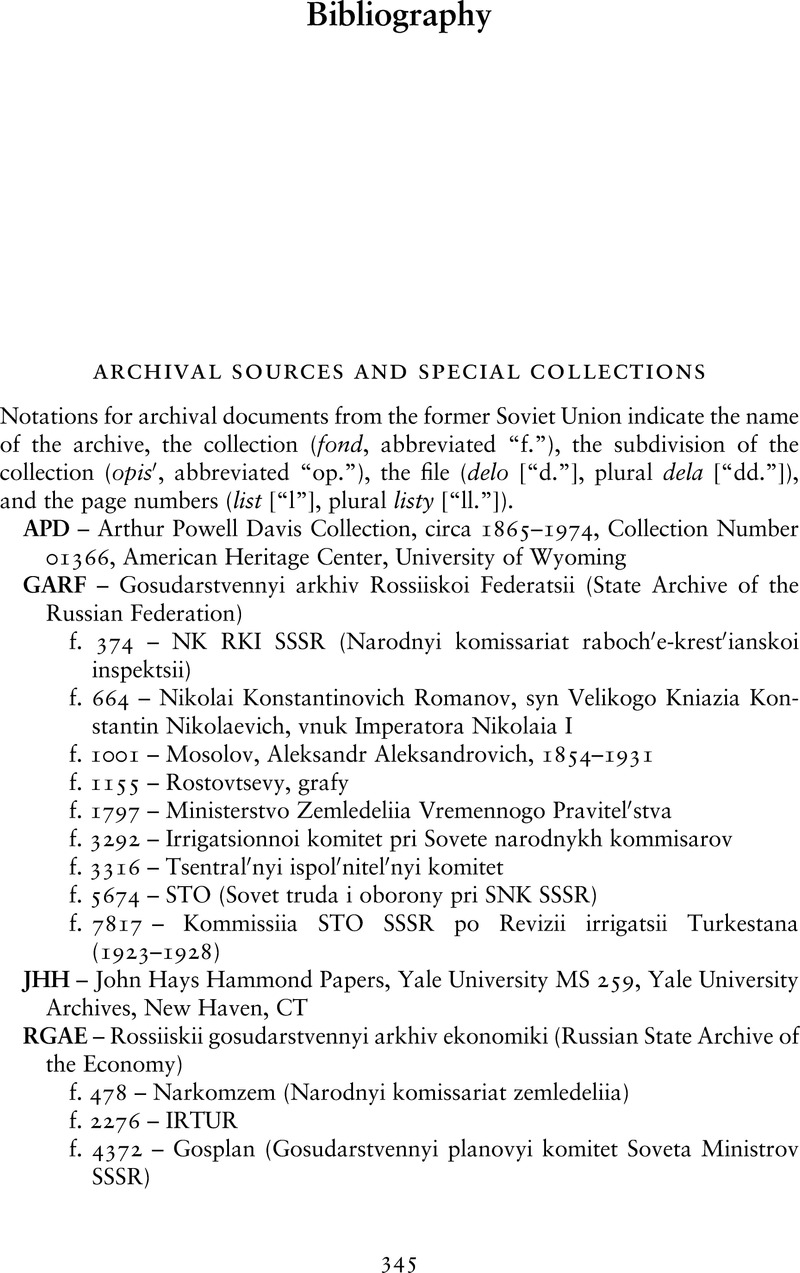Book contents
- Pipe Dreams
- Studies in Environment and History
- Pipe Dreams
- Copyright page
- Dedication
- Contents
- List of Figures
- Acknowledgments
- Note on People, Places, and Institutions
- Introduction
- 1 The Land beyond the Rivers
- 2 Eastern Eden
- 3 To Create a New Turkestan
- 4 The Land of Bread and Honey?
- 5 Sundering the Chains of Nature
- 6 From Shockwork to People’s Construction
- Epilogue
- Conclusion
- Glossary
- Bibliography
- Index
- References
Bibliography
Published online by Cambridge University Press: 06 May 2019
- Pipe Dreams
- Studies in Environment and History
- Pipe Dreams
- Copyright page
- Dedication
- Contents
- List of Figures
- Acknowledgments
- Note on People, Places, and Institutions
- Introduction
- 1 The Land beyond the Rivers
- 2 Eastern Eden
- 3 To Create a New Turkestan
- 4 The Land of Bread and Honey?
- 5 Sundering the Chains of Nature
- 6 From Shockwork to People’s Construction
- Epilogue
- Conclusion
- Glossary
- Bibliography
- Index
- References
Summary

- Type
- Chapter
- Information
- Pipe DreamsWater and Empire in Central Asia's Aral Sea Basin, pp. 345 - 370Publisher: Cambridge University PressPrint publication year: 2019



